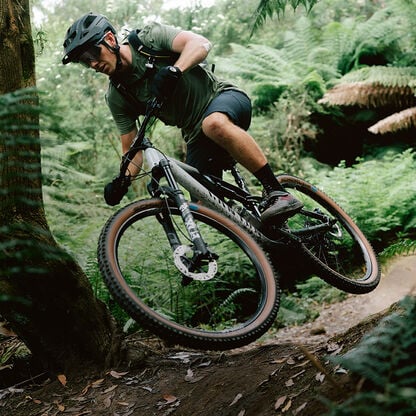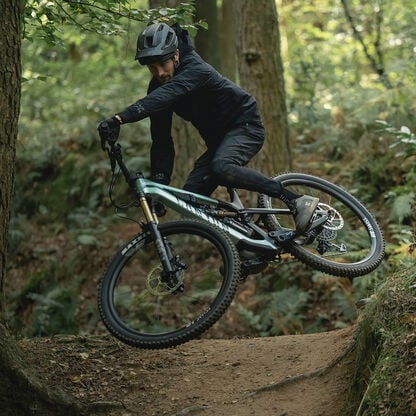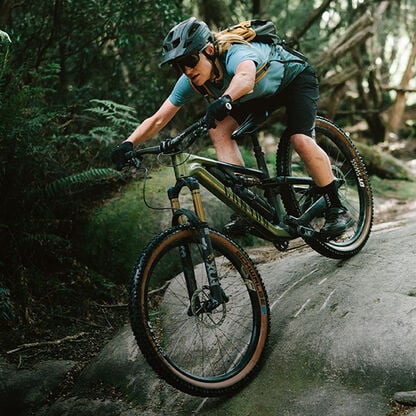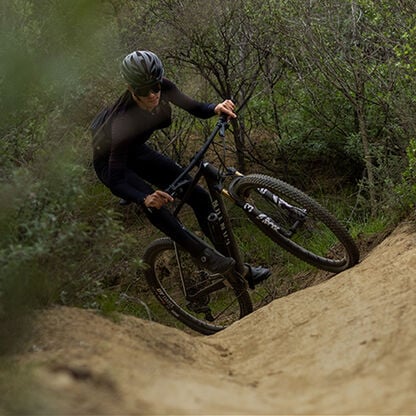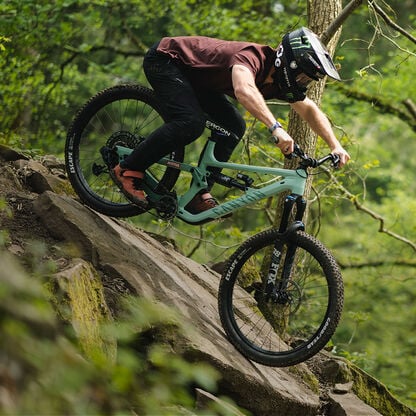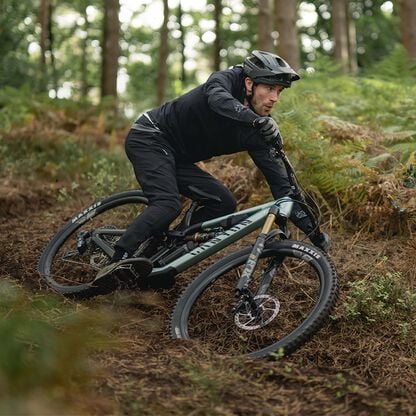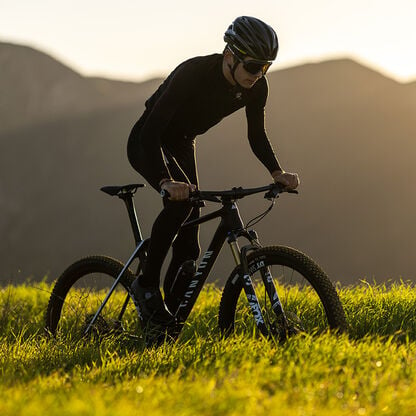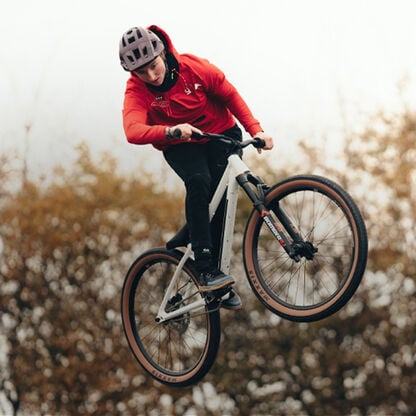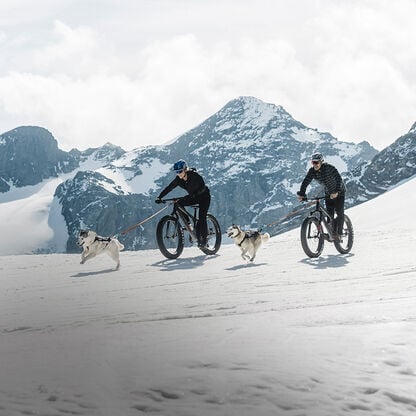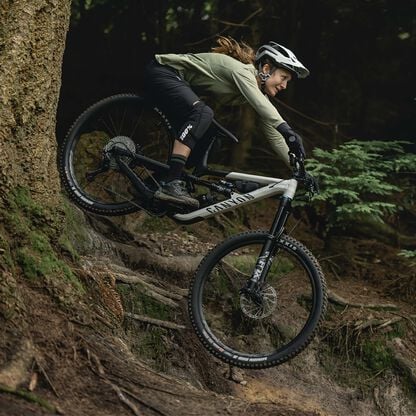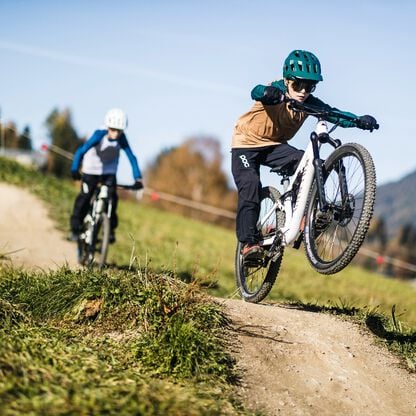Choosing between an Enduro and Downhill MTB: What are the Differences?
If you like your trails to point aggressively downwards, but secretly love a climb too – which bike is best? Let’s look at the differences between downhill vs enduro bikes and why angles really matter.
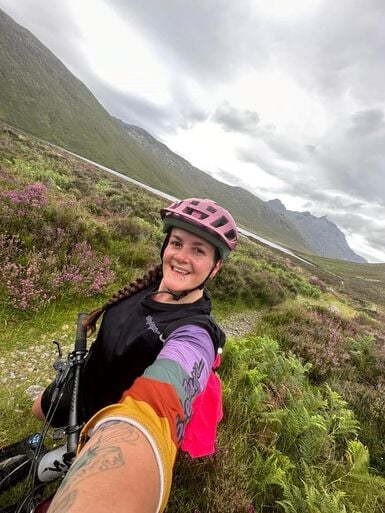
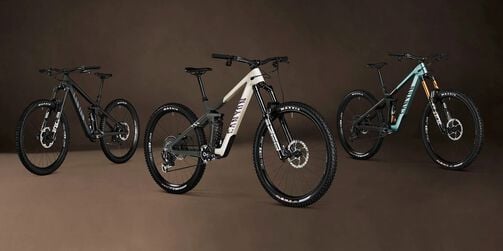
It’s easy to get lost in a sea of geometry numbers when choosing between a downhill vs enduro bike, but it really boils down to one question: do you want to pedal or push up the climbs? If it’s the former, only one will do.
In this guide we explain the differences between enduro vs downhill bike geometry, and what the numbers mean for how they’ll ride, to help you beat decision fatigue.
Contents
Downhill vs Enduro: Geometry Differences
Amongst other measurements like suspension travel and chainstay, it’s the seat and head angles that really matter when it comes to downhill vs enduro bike geometry. An adjustment of even half a degree can make a massive difference to how stable the bike feels on steep trails; how responsive it handles when the trail gets tight; and how doable it is to attack on the climbs – or climb at all.
With a downhill bike, the clue’s in the name. It has one job: to ride downhill, fast, on rough, technical trails. As a result, the geometry is focused on descending with stability at speed, and not much else.
What does that look like in numbers?
Let’s take the downhill bike Sender:
- Huge 203mm suspension on the front and 200m rear to munch up the biggest hits and land all the gaps.
- Slack head angle of 63.5º slows steering and makes the front of the bike longer.
- A super slack seat angle of 65.9º keeps your weight back and bike stable.
- Long wheelbase (1274mm) and chainstay (446mm) to keep you steady at high speed.
All of this levels you out on steep, technical descents for maximum control and stability at speed. Basically, for downhill riding and racing, pedalling is not a thing.
Enduro bikes still have the muscle for the downhill hits, but with a more efficient (steeper) seat position for pedalling back to the top.
On the Torque, our gravity all-rounder:
- 170mm front and rear suspension.
- Same slack head angle as the Sender (63.5º)
- But a steeper 77.5º seat angle and shorter reach to centralise rider weight for full traction on technical climbs.
- Slightly shorter wheelbase (1253mm) and chainstay (440mm) to improve manoeuvrability.
This combination of slack on the front and steep at the back on enduro vs downhill bikes gives power and confidence to attack whatever the trail throws, whether day-long bike park laps or all-out enduro racing.
Learn more about mountain bike geometry in our guide.
Front and Back Suspension Travel
The most visible difference between a downhill vs enduro bike is the forks and front suspension. Downhill bikes have around 200mm of front travel on massive, dual crown forks attached to the handlebar on a direct mount stem. This gives the rider a stiffer connection with the bike, and a higher front end than an enduro bike.
The higher the bar, the slacker the head angle, and longer the wheelbase, which translates to a more solid and stable ride on steep, rough terrain. On the rear, downhill bikes typically range between 180-200mm of suspension to soak up the big hits.
Enduro bikes typically have between 160-180mm of front travel on single crown forks, attached to the steering tube on the frame. These forks are typically lighter, with a bit more flex and manoeuvrability, making climbing and riding tighter tracks easier. Rear suspension on enduro bikes is usually around 160-170mm, so enough to take on rough trails with ease, though not quite as dialled in as a full downhill rig.
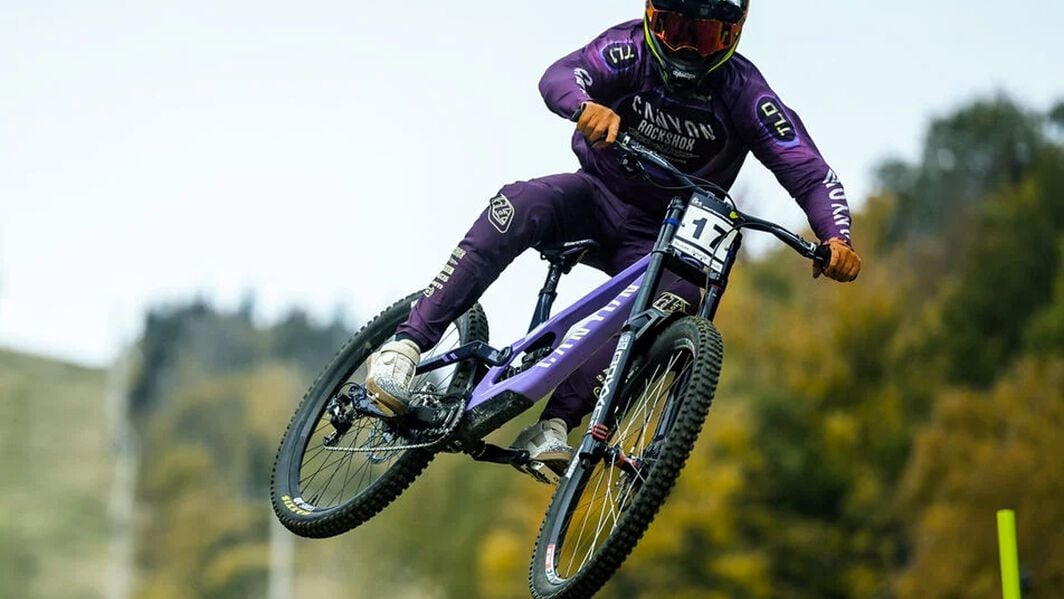
Tires and Tire Clearance Distinctions
Enduro and downhill tires are typically wider (2.4-2.6”) with a deeper tread for more traction on tough terrain, so you can ride faster, with confidence – which is obviously essential for big-hitting descents.
Sticky tires bring confidence, so you can push hard at speed without worrying about grip. The downside? Heavier tires are harder to push, which matters if you’re racing enduro with the transfers between stages.
Before you buy, check the maximum tire width for your bike. This recommendation is there for a reason – wider tires reduce clearance between the wheel and the frame. Less clearance means more risk of damaging your frame if the bike gets clogged up, so bear in mind the ideal recommendation of 4-5mm clearance between the tire and frame.
In terms of wheelsize, each option has its merits. A bigger wheelsize of 29” gives better rollover speed and stability over big rocks and drops, whilst a 27.5” tire is more agile and manoeuvrable. A mullet set up with 29” on the front and 27.5” at the back brings the best of both worlds.
Variances in Gear and Equipment
Heavy shredding calls for heavy duty kit. Whether you choose enduro over downhill or have a go at both, there’s essential mtb clothing and kit you’ll need.
- Full face helmet - Some bike parks won’t let you ride without one and if you’re racing, check the event rules to make sure your bike helmet is compliant. For enduro, you’ll want a lightweight full face helmet with good ventilation to stay comfy on the climbs with full protection on the descents. Downhill helmets are typically heavier, with better impact protection but sacrifice ventilation.
- Durable MTB pants - The best pieces of downhill mountain bike clothing is the kit you forget you’re wearing. Our premium MTB trousers fit that category, made from long-lasting material, with a slim, tapered fit and extra ventilation for run after run – also compatible with most knee protectors.
- Goggles - The last thing you need is watery or muddy eyes when you’re smashing it down a black run. Wear goggles that wrap around your helmet to keep out the wind, dirt and dust so you can concentrate on the trail.
- Shoes - Depending on if you’re riding clipless or flat pedals, mtb shoes should be durable, grippy and fit well. Downhill riders might choose shoes with extra impact protection in the toe box, while enduro riders need more flex for pedal efficiency and all-day comfort for the whole race weekend.
- Gloves - Come rain or shine, bike gloves help with grip in the wet or sweat, and save your hands if you crash.
- Body armour - Knee pads are the bare minimum for downhill and enduro riding, and elbow, back or chest protectors are also worn by many. For enduro, look for specific enduro body armour for lightweight versions with flex and ventilation to keep you cool on the climbs.
Here’s a mountain bike gear guide if you want to know more about MTB equipment.
Enduro vs Downhill Race Differences
The word enduro is a contraction of endurance, which should help to explain the main difference between enduro vs downhill racing. Downhill race runs last a few minutes, with riders pushing or getting uplifts to the top of the course. There’s no pedalling apart from the few quick power strokes before features to clear them. Races are timed from the top to the bottom of the run, and that’s it, with riders getting one chance to put the perfect run in.
Enduro racing is a longer event across one or two days, with numerous technical downhill sections against the clock. Riders have to make their own way up to the top of the runs, hence the need for enduro bikes to be able to pedal as well as descend hard.
The climbs to the top of each stage aren’t timed, but you’ll want to be quick to reduce your total time for all stages. In enduro racing, good fitness and endurance matters, as well as decent downhill skills.
Whatever mountain bike and discipline you choose, whether downhill vs enduro, the gas is on full til the end.
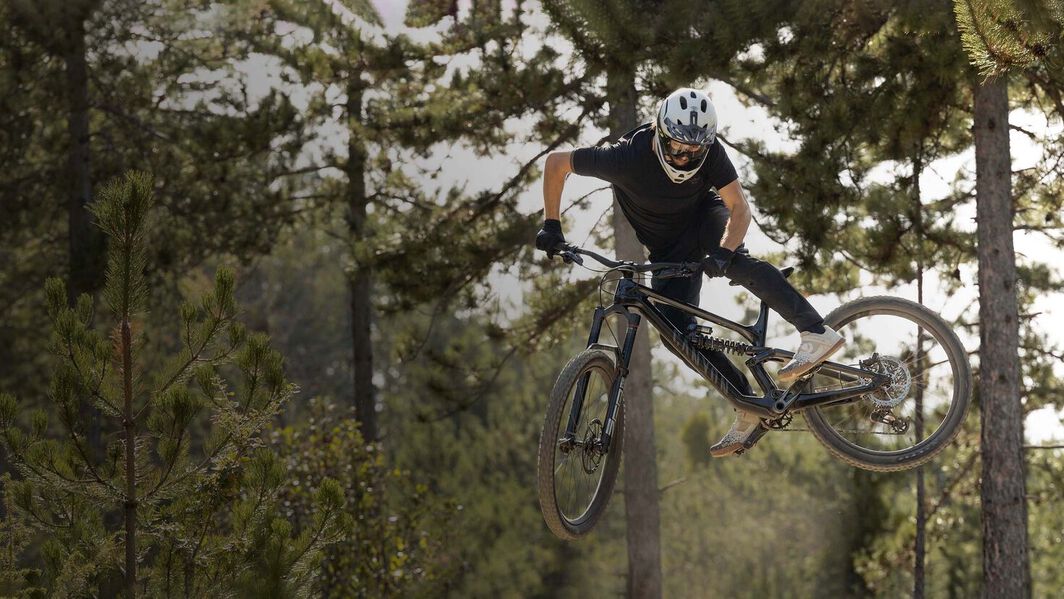
Crafted for Varied Purposes and Terrains
Enduro and downhill bikes are engineered with precision to excel in specific terrains and scenarios. With their robust design featuring slack geometry, substantial suspension, and durable tires, these bikes are tailored to tackle the most demanding trails and conquer challenging descents.
Can Enduro Bikes be Used for Downhill?
The slack geometry, big suspension, long wheelbase and big tires of today’s enduro bikes are built for bike park blacks and downhill tracks. They’re also built to pedal back up, so won’t be quite as dialed in on the downs as a full downhill machine.
It’s a trade off worth making if you want the option to do more than just downhill.
Can Enduro Bikes Go Uphill?
They absolutely can. The steeper seat angle on an enduro bike positions your weight more forward than on a downhill bike, boosting power through the pedals for the climb back to the top.
Can a Downhill MTB be Used for Trail Riding?
It’s possible, but it’d probably feel horrendous. The long wheelbase, super slack geometry and massive travel is designed for steep, technical descents and nothing else. So tight, technical switchback climbs or big mountain rides would definitely class as type two, or maybe even type three fun on a downhill bike.
Conclusion: Enduro vs Downhill Bike - Which is Better?
So with all this in mind, when should you choose enduro over downhill? If you’re into full gravity for 100% of your riding, a downhill rig is definitely the one. But if you want even a 10% option for any other type of ride – and the ability to climb – an enduro bike is best.
The good news is our enduro bikes are equipped with adjustable geometry to slacken or steepen head and seat tube angles for attacking the climbs and descents. Check out Pedal and Shred mode on our race-winning Strive. Maybe there really can be one bike to do it all.
Discover our Mountain Bikes
Did this article help?
Thank you for your feedback
-
 About the author
About the authorTess Agnew
Tess is a freelance copywriter, social media and communications pro based in Brighton with a passion for the outdoors and the mental health benefits it brings.
